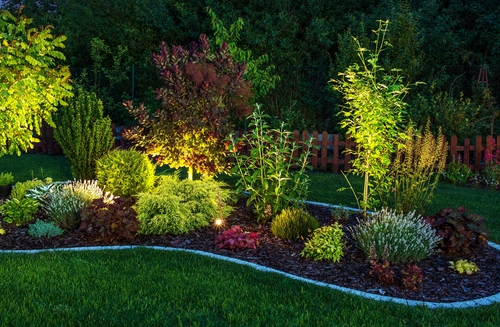Posts Tagged DK Landscaping
A Closer Look at Irrigation Systems – Part 2
Today irrigation systems vary, where some techniques used can be simple and some a bit more complicated, however the big question is which one will be best for your garden? To properly answer that question it would be best to take a look at the different types of irrigation systems, how they work and the benefits each offer.
Irrigation Types and Benefits
SURFACE IRRIGATION
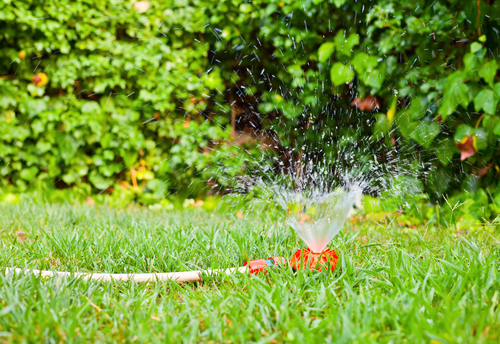
Surface irrigation is one of the oldest and most common methods of irrigation used. Dating back as far as far as the Egyptian and Mesopotamian civilizations this method uses the force of gravity to distribute water into the soil.
Later referred to as flood irrigation, simply because it allows water to flow and pool into an area, this is not as efficient as other irrigation methods because overwatering can occur, however it has still been successfully used throughout the centuries to produce healthy crops and lush, beautiful gardens.
Let’s Observe The Benefits You Can Get With Surface Irrigation
- Surface irrigation systems cover a large area of land in a faster time than that of other irrigation systems.
- It requires less manual labor.
- Irrigation systems are not negatively impacted by winds or sediments.
Depending on the type of gardening you do, you can determine if this type of irrigation system is more effective for you, however if you live in an area where water regulations are strict you may want to utilize a more conservative irrigation method.
SUB-SURFACE IRRIGATION
Similar to that of the low-drip method, sub-surface irrigation works by distributing water through tubes and emitters. As you can probably guess by the name of this system, the tubes that distribute water throughout this system are located below the surface of the soil.
Brought about in the 60’s as a way to deal with water scarce landscapes, this system works best in areas that are hot, arid, or windy to effectively provide plants with the water they need to thrive.
The Benefits Of Sub-Surface Irrigation Include
- By eliminating surface water sub-surface irrigation prevents water evaporation in hot and arid conditions.
- Reduces weed growth by depriving weed seeds of water.
- Because it’s below the ground, it protects the system from damage caused by animals or machinery.
If for some reason you still have a few unanswered questions on what irrigation method would be best for your landscape, then DK Landscaping is here to offer that expert advise you need.
Just a call or click away we can come in to evaluate your property and help you to decide on, and install an irrigation system that is not only efficient but effective enough to maintain the integrity of your landscape.
Contact us today at (707) 280-3632 to book an appointment or you can visit our website dklandscaping.com for more information.
The Ultimate Guide to Hiring Yard Maintenance Services in Santa Rosa
Every homeowner wants a healthy and beautiful yard that is weed-free and has healthy trees. Contrary to most people, fertilization and regular weed killer treatment won’t help you achieve this. There is a lot of time and experience required to have a beautiful yard that you are proud of. It is wise to consider hiring yard maintenance services providers with the knowledge and expertise needed for best results. Though this may sound simple, it can be challenging as there are many companies to choose from and many things to consider. Here is an ultimate guide to hiring yard maintenance services in Santa Rosa.
The main benefit of hiring a yard maintenance Santa Rosa.
As discussed above, maintaining a gorgeous yard can be challenging as it requires an ongoing commitment that your busy schedule may not afford you. Hiring a professional landscaping company like Dk Landscaping is a clever way of keeping your lawn looking attractive each day. Here are some of the top benefits to hiring a professional lawn care company:
Quality work
When working with professional yard maintenance Santa Rosa, you can rest assured of quality work. Landscaping companies here have a team of professionals who analyze your yard and know the type of soil it has and grass that will do well in it, the kind of fertilizer to use for perfect results, and the needed irrigation to make your yard stand out. They come with all the required equipment and have vast knowledge on what to do in case of challenges such as weed growth and dead patches.
Knowledge and expertise
Yard maintenance experts normally undergo training, which equips them for the job. When you hire a yard maintenance company in Santa Rosa, you can expect better than average results directly because of their knowledge and expertise.
Save time
With advancement of technology, hiring a yard maintenance service is very easy. All you need to do is call and ask for a quotation. For some companies you can simply get the quote on the company’s website, which takes minutes. This short process saves you the may hours you would have spent researching your lawn’s needs, buying the needed equipment, and maintaining the yard.
Comprehensive services
Yard maintenance services providers will not only give you a beautiful lawn that will change the appearance of your home. They will answer any questions you may have regarding treatment and your yards’ needs. Besides, they will alert you if there are threats to your yard from pests and diseases, which are very critical.
What to consider before hiring a yard maintenance company
Today, the yard care industry is very decentralized, which causes excellent variance between companies. So, how do you choose a lawn service that meets your needs with thousands of companies to choose from? Here are the main things to consider:
Reputation
There are many yard maintenance services providers in Santa Rosa. To get one that will deliver quality and timely work, you need to do thorough research. Google search would be a perfect place to search since you can compare the companies here. Get to go through their reviews which will give you an understanding of the company’s services. Another way to gauge a company’s reputation is by asking friends, family members, and even neighbours who may give you an idea of the perfect local service providers.
Insurance
It is vital to ensure that the company you are working with is fully insured. This way, if a worker gets hurt within your compound, you are not held responsible, but the insurance company takes responsibility.
Licensing
Though it may be cheaper to work with unlicensed companies, it is advisable to pay the extra cost but get quality work. Licensed service providers have the required training; hence you are assured of quality work.
Customer service
Yard maintenance is not a one-day service. When you hire a company, you will be working with them for an extended period. Therefore, it is vital to work with a company that you can easily communicate with should you have a question or a problem.
The contract terms
In the landscaping industry, lengthy contracts are prevalent. Before hiring a yard maintenance service, ensure that you have gone through the agreement to understand their terms and that they are flexible enough for you. Also, it would help to ask for a trial period before signing the contract. If you are not satisfied during the trial period, you can stop the services.
Bottom-line
By choosing us, Dk landscaping company, you are choosing to have a comprehensively cared for and clean yard through all the year’s seasons. We pride ourselves on offering highly convenient and dependable yard maintenance services in Santa Rosa. Give us a call today for all your yard maintenance Santa Rosa needs and water-saving landscape design (xeriscape). We are well equipped with the right professionals and tools required to get the job done and leave your yard looking gorgeous!
Landscaping Guide: How to Create a Beautiful and Functional Garden Design
There is no perfect garden design for all properties. Therefore, if you are interested in improving your landscape by establishing a garden, you must create a custom design that matches your needs. We at DK Landscaping know that an ideal design should complement the unique aspects of your property. Each piece of land has idiosyncrasies which can be used in landscaping. In addition, you must think about your goals for your new garden. Here are some simple guidelines to help you get started.
Choose Your Plants Wisely
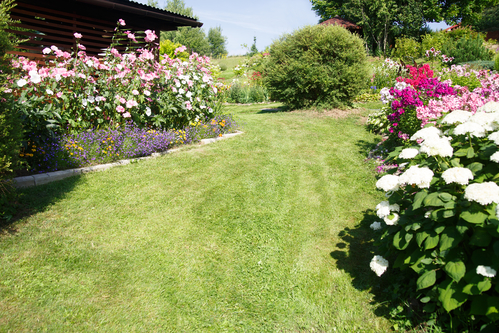
The best garden begins with the selection of the right plants to complement your landscape design and practical needs. In general, the first issue that you should consider when choosing your flora is the purpose of the garden. This space can be used to grow ornamental plants for aesthetic appeal. Alternatively, you can choose to grow edibles such as herbs and vegetables. If you are interested in both edibles and visual impact, it is possible to combine both types of plants.
The climate and environment is also an important consideration during the selection of plants for your garden. If you choose flowers, herbs or vegetables which cannot withstand growth in your local conditions, your garden will fail prematurely. It is advisable to choose indigenous plants because they grow naturally without the need for constant care. You can conduct research on the flora that grows in California for the best decisions.
Define the Boundaries
Boundaries are essential elements in garden design. If your garden does not have clear edges, your landscape will look like a wild land with plants growing haphazardly. Therefore, you must create distinct borders to define the perimeter of your garden and create order. If you would like to have a completely green landscape, consider using a hedge around your garden. For a more formal look, build a fence to isolate the space. It is also possible to edge the garden with stones. The stones will create a boundary without interfering with the visual effect of the garden.
Paths for Your Garden Design
Pathways are essential for a garden, especially one that experiences considerable foot traffic. The paths will allow smooth navigation around the space while protecting the landscape from the dangers of human carelessness. When designing your garden, you should think about the ideal places to form paths. You must also ensure that the path is wide enough for convenient use. To prevent the growth of plants on your pathways, consider installing a pavement or at least pouring gravel.
Borrow the Scenery
Gardens can be made more interesting by borrowing the scene from the surroundings. This borrowed scenery technique involves incorporating the view of a special feature into your garden. Simply speaking, this practice is about capturing the view beyond your own garden. For instance, you can trim the trees in your garden to reveal a distant building, your neighbor’s orchard or a mountain. Though these elements will not be on your property, they will have an impact on the aesthetics.
Enjoy Your Garden
Finally, you should create a comfort zone in your garden to allow you and your guests to enjoy the natural appeal of the space. For instance, a garden bench in a secluded spot might be perfect for settling and reading. A patio bordering the garden might be what you need for entertaining guests.
If you are interested in learning more about garden design, consult our landscaping experts for customized advice and guidance.
![]()
Backyard Ideas: Follow these Steps for Excellent Xeriscaping
Landscaping is great for the air quality around your home, and the curb appeal. However, many people complain that sometimes, it comes at an extremely high cost. One of the costs which are part of landscaping is water expenditure. Xeriscaping is an alternative to landscaping where the least possible amount of water is used. The beautiful thing about the process is that the quality of the resulting landscape will not be compromised, but a lot of water will be saved. Here, are some of the best backyard ideas on Xeriscaping which you need to try out.
Take note of problem areas
The start of any watering process should be to have a look at all the parts of the yard, and notice the ones which are easy to water, and also those which are extremely difficult to maintain. Steep slopes are usually the most prone to drought. After mapping out these areas, decide whether you want to keep their vegetation cover or not. If you decide that you want the vegetation cover, convert into perennial crops which do not need a lot of watering to stay alive and healthy, especially in the hot season. You might also want to consider drip irrigation to maintain these parts of the lawn.
Manage the size of the backyard garden
Another reason a lot of water gets wasted in irrigation is when the garden has an irregular shape. To combat this, you have to reshape the garden to create shapes which are easy to irrigate. You also need to replace the plants with xeric alternatives such as blue grass and buffalo grass, both of which take wear and tear very well. Buffalo grass can survive on less water; however, it has a low tolerance to interferences such as foot traffic, which makes it best suited for parts of the lawn that will not have a lot of traffic. Section off parts of the garden that are used less often, and turn them into shrub borders and flower gardens, that need less water to thrive.
You can also section off parts of the garden and make them into paths. You can line these paths with stepping stones of flagstones, which is good because it reduces the total surface area which has to be covered with lawn grass. Another tip which will be successful is transforming the rocky parts of the garden into a rock garden. You can use a variety of colorful rocks for the garden and use appropriate rock garden designs. There is a variety of crops which you can add to the rock garden.
Picking the right plants
The best plants for backyard ideas in xeriscaping are native and drought tolerant plants. Remember that xeriscape gardens are created in such a way that they fit Mediterranean and Southwest styles in gardening. You can consult with a landscaping expert to figure out the plants which will be most appropriate for your climate and locality.
When Xeriscaping is planned for and done properly, it produces some of the best gardens. It capitalizes on preserving native plants while at the same time reducing the amount of water used in gardening, and giving the regular landscape of your backyard a special touch. When you involve a competent landscaping expert in the process, the outcome will be amazing.
Lawn Treatment Tips
Proper maintenance of your lawn is crucial for a perfect residential landscape. If the right upkeep practices are not upheld, the lawn will deteriorate. Invasive weeds will grow on the land, the plants will lose their lushness and the grass might begin to wither. On the other hand, if you make time for lawn care, you will preserve the natural appeal of your yard. Here are simple lawn treatment tips to help you keep your residential landscape beautiful and healthy.
Aerate the Lawn Soil
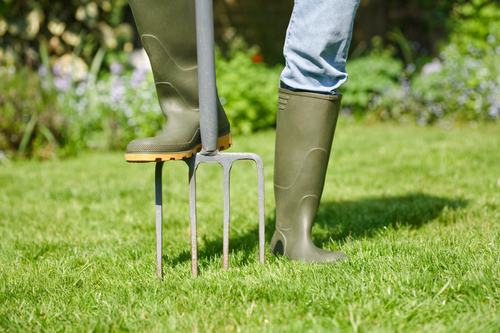
Compacted soil does not support the efficient growth of grass. If the ground is too compact, the roots of the grass will not grow deep. Moreover, water, air and nutrients will not be mobile and readily available in the soil. Fortunately, you can relieve compaction and aerate the lawn soil by creating holes in the ground at intervals. There are specialized tools for aeration, but a simple garden fork will also be effective. You will only need to push the prongs into the ground at short intervals.
Apply Suitable Fertilizer
Feeding the lawn with fertilizer can improve the appearance and health of the grass. The treatment will provide the nutrients which might be absent from the soil. If your landscape is large, it is advisable to acquire specialized equipment for nutrients feeding. However, if the lawn is relatively small, you can manually apply the fertilizer to the grass. Ideally, the material should be used during the rainy season. Fertilizer will burn the grass if it stays on the blades. If it does not rain, you should irrigate the yard thoroughly to allow the nutrients to sink to the soil.
Plan on Over-seeding
Over-seeding is a beneficial practice for old and tired lawns. It is advisable to consider this process if your lawn is showing signs of thinning out, or there are bare patches on the land. In general, over-seeding involves covering the entire loan with a mixture of grass seeds and fertilizer. When these seeds grow, they will fill in the gaps between the thinning areas of the lawn, creating a lush and uniform landscape. If you decide to carry out this process, remember to keep the lawn moist to facilitate germination.
Mow the Lawn Correctly
Mowing is an important part of keeping your lawn in good condition. However, if you do not perform this maintenance process correctly, you could cause more harm to your landscape. Where possible, it is prudent to have your grass mowed by a skilled professional. If you must handle the work, you must remember to only cut about a third of the total grass length. Cutting more will compromise the growth of the grass. You must also avoid mowing wet grass because moisture causes clumping. Mowing the lawn in this condition increases the risk of patching.
Going Beyond Lawn Treatment Tips
Maintaining a beautiful landscape is not only as simple as upholding simple lawn treatment tips. The best upkeep and care practices require effort, time, skill and experience. Therefore, if you are interested in improving your residential lawn for long-term health and aesthetics, consider consulting our experts at DK Landscaping Inc. Whether you need mowing and edging or fertilization and weed management, you will receive the best services for a beautiful home.
![]()
Four Creative Flower Bed Ideas to Get You Going
Creating sensuous textures and adding color to your garden with a flower bed is one of the quickest ways to improve your yard. And when it comes to flower bed ideas, there’s virtually no limit.
Raised flower beds are getting a lot of attention lately because they’re easier to water and maintain, but that’s far from the only option.
Other options are flower beds that encase trees and create a truly picturesque effect, flower beds that line a walkway to a backyard oasis, and tall flower beds filled with azaleas and wisterias.
Flower Beds Encasing Trees
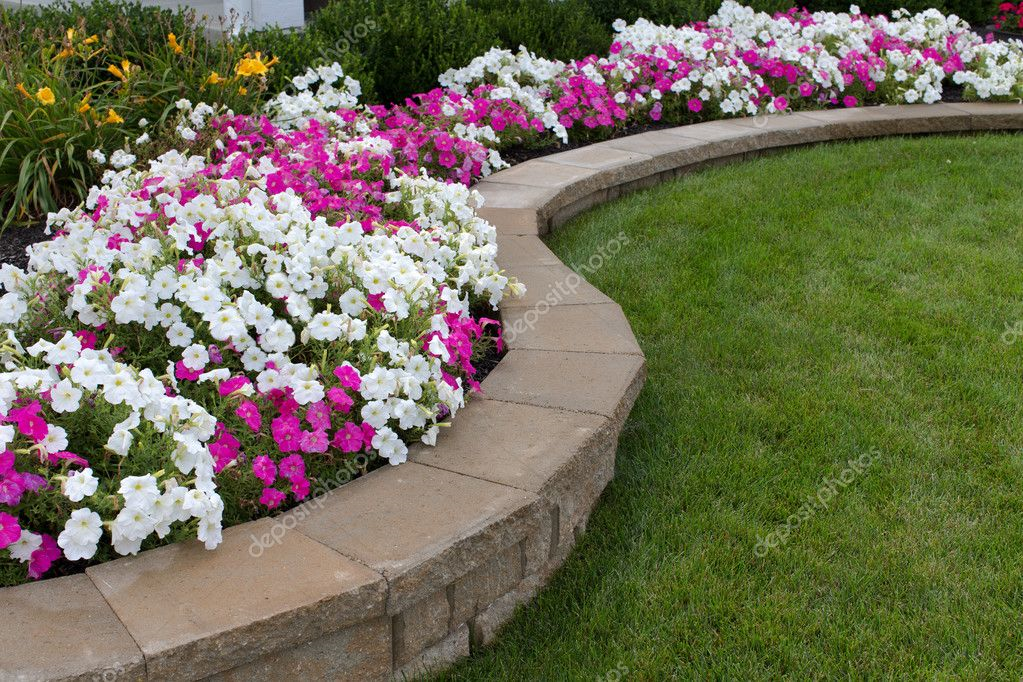
The thing to do when planting flower beds around trees is make sure that you’re selecting the right flowers for your particular region and getting the amount of sunlight versus shading right.
Plants and flowers that are “full sun” are the easiest to work with since they can receive six hours or more of sunshine per day and still be fine.
Yarrow, tickseed, and blanket flowers are all full sun plants that go great around trees. Lavender (purple) and sasha sage (white) pair well together and are both full sun plants. These might well give you the effect you’re looking for.
Circular Flower Beds
If you’re feeling a bit more adventurous, then you might want to consider a few of the flower bed ideas below (including this one!).
Circular flower beds are good if you have a huge tree that you want to draw attention to or a bare spot in your yard that needs a bit more color.
Taking an eclectic approach that gives you a wide palette of color is usually the way to go when it comes to creating a successful circular flower bed.
Bulbs, annuals, and perennials with a nice border flower like garanium can really frame things nicely. Putting something like a bird bath in the center is also an option.
Like these flower bed ideas but feeling overwhelmed with actually pulling them off? Get in touch with a landscaping company that can help you design, build, and maintain your flower bed for years to come.
Flower Beds Along a Walkway
As far as flower bed ideas go, this one’s right up there in popularity with raised flower beds and flower beds around trees.
Flower beds lining your walkway can significantly increase your curb appeal as a homeowner and work well with condos and receptions as well.
In terms of design, planting decorative flowers as a border along your walkway is said to soften the sameness and artificiality of concrete.
A line of flowers adds an unexpected splash of color in an unlikely, though not unwelcome, place.
Landscaping and design experts say to go with flowers that are hardy yet vibrant like mahogany bugleweed (purple) or red ruby.
A landscaping company can plan, edge, and till around your walkway to get things started on the right foot. Composting, mounding the soil, and actually planting the flowers comes next.
Here too landscapers can provide regular maintenance and put your flower bed and lawn on the irrigation and aeration schedule that both need to flourish and bring your outdoor landscape into full color.
Slanted Flower Beds
Slanted flower beds are one of those creative flower bed ideas that’s certainly not right for everyone but could be perfect for many people.
If your front yard is pitched, for instance, a landscaping team can help you raise your dirt bed to level and create a retaining wall that maximizes your flowers’ blooms while minimizing soil compaction.
Grasses and succulents are smart choices for sloped gardens. Contact a professional landscaper to make it happen!
Finally…Here are the Elements of Amazing Garden Design!
Garden design is about getting the most out of your outdoor space and creating an inviting backdrop for family, friends, and neighbors.
You obviously want to get to the point of enjoying your outdoor landscape as soon as possible, but a lot of work goes in to getting things just right.
Garden design revolves around having the right location, soil conditions, boundaries, and surfaces to work around. That said, the elements of garden design can’t be overstated.
The Elements and Location of Your Garden

There are two basic elements of great garden design – something known as hard elements (i.e., relatively immovable design details like paths, walls, lounge chairs, and decks) and the actual plants and flowers that adorn your garden.
Hard landscape elements can include beautiful additions to your outdoor landscape like a koi pond stocked with fish or a stone path that gradually opens up to a breathtaking garden rich with flowers and color.
These two basic elements of garden design – the hard elements and the actual plants you use – dynamically work together to bring out the best in your garden.
Creating a Powerful Effect
The kind of paving that you use leading up to your garden can have a dramatic effect on the overall impact of your garden. Grey stone with purple lilac, for instance, can create a captivating French country look that really inspires.
On the other hand, working with a professional landscaping company to curate a manicured lawn and lush garden around black paving can create a modern look that’s both classy and inviting.
A professional landscaper can cut through all of the guesswork and help you determine what the best garden design for your home would be.
The best garden design for you is determined by your design preferences, of course, but also strongly suggested by your climate zone and any microclimates in your area.
Your particular climate can affect whether you’re able to plant annuals or whether hardier perennials would be a better choice. Your climate also impacts things like seeding, blooming, aeration, irrigation, and the soil foundation that fundamentally make a great garden.
The Soil, Boundaries, and Surfaces of Garden Design
A lot of homeowners want to fast forward ahead to enjoying a garden lush with roses, lilacs, tulips, and dahlias…and those are all beautiful. The foundation for all of those, though, is your garden’s soil.
There’s a process that a professional landscaping company can help you with known as amendment, which is where nutrients are added to your subsoil and topsoil to ensure that it provides a foundation for healthy plant and flower growth.
A landscaping company can use the right soil structure – whether that’s loam, silt, or some amount of clay – for your garden’s flowers, acidity levels, and your particular climate.
Boundaries and Surfaces for Framing
Having the right boundaries (e.g., a line of hedges and nice, white fence) and surfaces directly bordering your garden (e.g., woodchips, straw, or pebbles) can open up the possibilities with your garden design.
Using structural plants to frame the sides of your garden is a staple of good garden design as well. Boxwood and bay laurel can be planted year round and are relatively easy to maintain.
Evergreen shrubs are another popular border. The most popular border for most gardens is your lawn.
Having your lawn maintained or shaped and maintained around your new garden (lawns can be square, circle, or oblong-shaped) gets everything off on the right foot.
Professional landscapers can walk you through your options when it comes to garden design and picking the best aesthetic and practical features for your new garden. Contact us for more information.
There’s More to Landscape Maintenance Than You Might Think
Landscape maintenance is all about keeping your yard and garden attractive, safe, and healthy. That means keeping the bugs, insects, and other pests away and making sure that everything is cut and trimmed to keep your home or business landscape looking wonderful.
Getting on a regular landscape maintenance schedule might even be a good idea since it means less time spent pruning and weeding and more time spent with your family.
Professional landscapers can also handle the hard stuff like topsoil enrichment and making sure your lawn is on the right irrigation schedule.
Landscape Maintenance: Where Art and Science Meet
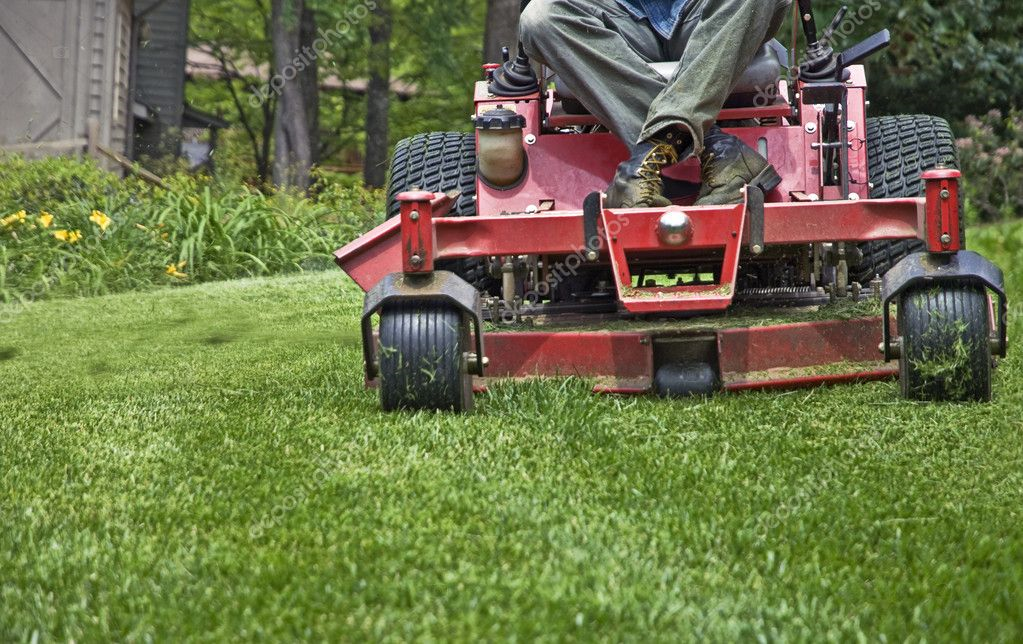
Professional landscaping is as much an art as a science. There’s a real science to, for instance, getting the pH balance of your lawn just right for growing plants, shrubs and flowers.
(Most grass likes a pH of about 7, though some warm-season grasses like more acidic soil with a pH of around 5. Don’t worry: The pros can tell you what’s right for your lawn!).
Now, one of the more scientific aspects of lawn maintenance is lawn aeration where your soil is perforated to allow in more water and the kinds of nutrients that your soil needs to perform at its best.
These tiny holes that are made when you have your lawn aerated also help get more air into the soil and help you avoid soil compaction. (That’s something you don’t want at all since soil compaction can negatively affect nutrient absorption and root growth.)
There’s as much art to landscape maintenance, though, since landscapers have to balance the layout, lighting, walkway access, and fencing of your yard with choosing and maintaining just the right bushes and mulch for your particular landscape.
Choosing the right kind of mulch – whether that’s straw, chips, stone, or bark – is important for making your garden and overall landscape look fantastic.
Mulching can also help prevent your garden from being ensnared by a bunch of weeds and ensure that soil compaction doesn’t become an issue for your lawn and garden.
The right kind of mulch can frame your landscape beautifully, promote nutrient absorption, and limit water use since more moisture gets to the roots.
Who Can Benefit from Regular Landscape Maintenance?
Because landscape maintenance covers so much ground almost any homeowner or business can reap the benefits. Condos, gated communities, shopping centers, community centers, banks, universities. You name it.
Any business that has a landscape that they want to protect and any homeowner that wants to improve their curb appeal should seriously consider getting on a regular landscape schedule.
So, do you currently need to be experiencing lawn issues to hire a landscaper? Not necessarily, but landscape maintenance includes things like fertilizing and spot treatments to address those pesky bald spots on your lawn.
Uprooting weeds is another thing that most homeowners don’t exactly look forward to doing but that can have a big payoff when it comes to keeping your lawn healthy and beautiful.
When you get on a regular landscape maintenance schedule you can have weeding, aeration, mowing and mulching taken care of.
Knowing that you’re doing the most to improve the curb appeal of your home or the attractiveness of your business property lends a huge amount of confidence that’s sure to spill over.
A professional landscaping company will even provide monthly irrigation inspections to ensure your yard, garden, shrubs, and bushes are getting the nourishment they need. You can also have your lawn pH tested to take the guesswork out of it.
Contact us to discover all of the amazing benefits of getting on a regular landscape maintenance schedule.
Ways To Master Your Summer Lawn Care
Here are the Top 5 tips For Summer Lawn Care that can help you to achieve the best lawn.
- Starting Over – Cleaning Up –
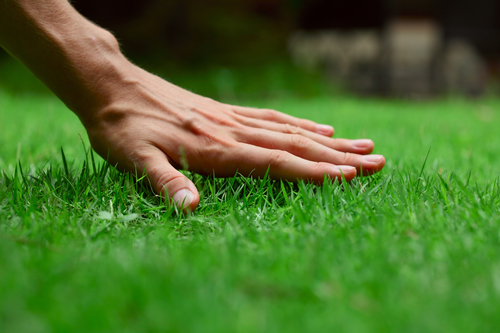
The first thing you should start by doing is walking over your lawn and gather branches, twigs, leaves and any other debris that has accumulated and dispose of. (Or it can be thrown in the compost bin to later be used as mulch)
Cleaning up your lawn area should also include raking up any matted areas of the lawn which can encourage snow mold. Not only does this help to prevent any disease or insect infestation but at the same time it promotes better air flow throughout the turf and allows new grass blades to grow without difficulty.
- Protect Your Interest – Weed Control –
Weeds can definitely be a gardener’s worst nightmare and no matter how you try to get rid of them they keep coming back. Though you may not be able to stop them completely there are things you can do to keep them at bay. Weed control.
As part of your lawn care, it is very important to carry out weed control – applying an effective weed killer whether it be organic or inorganic before temperatures hit 55-60 degrees. If you wait until temperatures reach this point, conducting weed control will be pointless as weed seeds would have already begun to germinate.
- Kick Start Growth – Fertilizing –
Winter really signifies a dormant period for gardens and landscapes as your lawn and other areas tend to go into a slumber, however, fertilizing your lawn and other garden areas in the spring gives it a much-needed jumpstart.
This provides an intensified nutrient build up that will give your lawn and other areas the strength they require to withstand the heat and drought that follow in the summer months.
- Let It Breathe – Core Aeration
Just like weed control, it is important to core aerate lawns in the spring as part of your lawn care, before soil temperatures reach 55-60 degrees since this encourages aggressive weeds to populate void spaces in a lawn. Allowing water and air to reach root zones easily, core aeration is great for lawns and helps gardeners to quickly achieve new growth when they apply this useful tip.
- Repair And Rejuvenate Lawns – Re-Seeding Turf
Nine times out of ten winter will wreck havoc on your lawn and come spring the damage is done. Now what? Well, as long as the weather permits it how about doing some re-seeding?
This is a great technique gardeners can use to restore damaged areas of their lawns, however, it may be a bit tricky if you’re applying a pre-emergent weed control so it must be carefully done.
You see, pre-emergent weed control isn’t selective, meaning it will prevent ANY seed from germinating including those used to reseed your turf.
Usually, it’s recommended to hold off weed control to the latest point possible an to perform the turf repairs needed as early as possible so that the seeds have enough time to germinate and become established before weed killer is applied. If this is not possible, don’t skip your weed control instead wait until fall to perform any turf repairs necessary.
Bonus Tips For Lawn Care
- Mow Turf On A High Setting – You should adjust your mower to cut your lawn grass at the highest possible setting. Most turf types usually thrive better when blade heights are about 3 to 4 inches tall.
- When mowing Zoysia grass and Centipede grass, use the lowest setting. For Bermuda grass and creeping bentgrass, it’s best to remove only a third of the total grass blade length at a time.
- Applying mulch – Mulches help to provide essential nutrients and help with weed prevention and soil stability all season long be sure to apply some where necessary.
Contact the experts here at DK Landscaping – our expert team is on call to come in and assist you with any lawn care or gardening task that you have.
Give us a call at (707) 280-3632 or you can visit our website at dklandscaping.com for more information or book your appointment.
Frequently Asked Questions About Drip Irrigation Systems
“The Secret Of Landscapes Isn’t Creation …It’s Maintenance.”-Michael Dolan
Micro- irrigation systems or drip irrigation as it’s more commonly referred, is basically a form of irrigation that supplies water toplant roots in a gradual manner. Extremely popular for its efficiency and its ability to promote water conservation, drip irrigation systems consist of a network of supply veins which run beneath the topsoil throughout the specified area, to thoroughly and strategically deliver a constant supply of water to plants.
They’re probably plenty of gardeners out there who find drip irrigation systems work well for their gardens but might not necessarily know everything they should about irrigation systems.
Unfortunately, because of this they may run into a couple problems that they may not be able to solve, so this article aims to answer any questions relating to irrigation systems that may prove difficult to answer.
Understanding Drip Irrigation Systems – Frequently Asked Questions & Answers
Q: How do you know if irrigation drip lines are working?
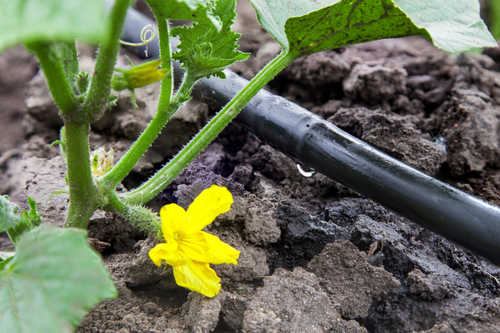
A: Since drip irrigation systems run beneath the topsoil it can be difficult to determine if it’s working. So, by simply observing the area after a few minutes of turning on the system to look for dampness in the soil around the line.
If your soil is mulched, just dig away a small portion of the mulch and soil with your hand and feel the soil to see if it’s moist or not.
Q: What’s the difference between a drip irrigation system and a ground sprinkler system?
A: Both systems function to deliver water to plants however a ground sprinkler system works by spraying a planted area above ground while a drip irrigation systems are located underneath the soil and deliver water directly to roots with a slow, consistent, drip.
Q: What type of garden is drip irrigation best suited for?
A: Drip irrigation systems are best suited for landscape beds with lots of plants and shrubs rather than lawns.
Q: How can a drip irrigation system benefit my garden?
A: Drip irrigation can offer gardens quite a few benefits once installed correctly. For instance, they prevent overwatering of plants and allow plant roots to absorb more water over a longer period of time, however some of the more popular benefits include its ability to promote water conservation, especially in drought-stricken areas and they offer a way for gardeners to save time and money.
Q: What difference will having a drip irrigation system make on my water bill?
A: As you can tell from its name a drip irrigation system practically drips water and emits water at a slower rate than above ground sprinklers or garden hoses.
With various settings, drip emitters may apply water at 0.5 – 4 gallons per hour where a rotor style sprinkler can water between 1 – 6 gallons per minute. See the difference yet?
You see, even though each landscape area differs in size drip irrigation systems can be set so that they have a slower application rate and higher efficiency. Based on this efficiency gardeners are able to reduce water usage by 50%. So, in other words, you’ll be cutting your water bill in half.
Q: Is a drip irrigation system difficult to install?
A: With easy to work with components, the process of installing a drip irrigation system is not difficult though there are certain guidelines you should follow. Basically, the process consists of weaving and arranging the tubing so that the supply of water is directed to the targeted areas.
Need Help With Drip Irrigation Systems?
If you don’t know how instal a drip irrigation system, don’t panic – help is just a call or click away. Don’t exhaust yourself spending hours in the sun struggling with irrigation tubes or worse stand in your garden and not know what to to to install your drip irrigation system. We can help.
Contact us at DK Landscaping Inc., to come in and assist you with professional irrigation system installation. Not only is our team knowledgeable about each aspect of irrigation installation but they will ensure you are well on your way without having to break a sweat. Call us today at (707) 280-3632 to schedule a visit or you can visit our website dklandscaping.com to learn more.


